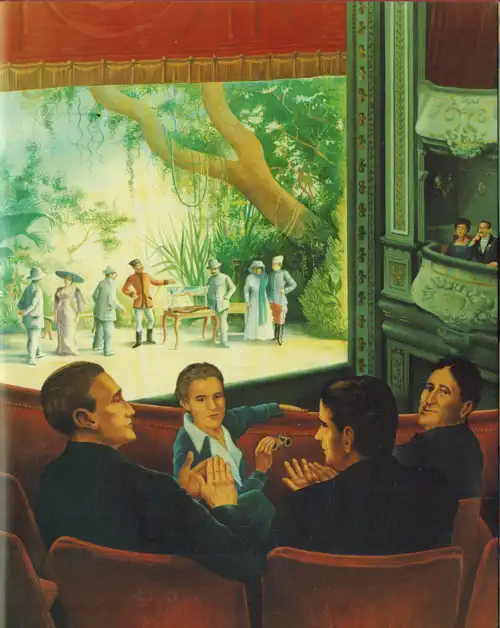listen
Michael Finnissy
Live performances by Andrew Infanti
Michael Finnissy (born 1946) is an English composer and pianist. His massive artistic output resists all attempts to label him (despite the tenacious etiquette “New Complexity”). He has composed operas, orchestral works, hypervirtuosic piano cycles, chamber music for unheard-of ensembles, etc.
Andrew Infanti has played a number of his works, two of which are Folklore I and the Piano Concerto no. 8 (live performances). (continue reading …)
Folklore I
Folklore I deals almost exclusively with Scandinavian fiddle music — to honor Edvard Grieg and his near-contemporary L.M. Lindeman. Finnissy makes use of sources by these nineteenth century musicians which are already transcriptions: Slåtter op. 72 and Ældre og Nyere Norske Fjeldmelodier, both of which claim their raison d’être as notations of peasant music for archival as well as artistic aims.
Finnissy brings plurality even to this narrow cultural focus. Other materials swirl into the fiddle framework: music to an abandoned tribute to Sorabji, another music of Ivesian chordal simplicity (Charles Ives), and Scottish piobaireachd traditional bagpiping ornamentation.
Piano Concerto no. 8
• Andrew Infanti, speaking pianist
• John Mark Harris, string piano
• Joanna Demers, flute
• Tucker Dulin, trombone
• Aiyun Huang, percussion
This work for speaking pianist and ensemble was commissioned by the Gruppo Ferruccio for a concert at the University of California, San Diego.
Finnissy relates being drawn to cult French author Raymond Roussel in the 1960’s when he bought the first English translations of his work.
Yet, the specific inspiration for the Concerto no. 8 is an illustration (see below) depicting the surrealist enclave mentioned in its true (original) title: Marcel Duchamp, the Picabias, and Apollinaire attend a performance of Raymond Roussel’s ‘Impressions d’Afrique’ at the Théâtre Antoine.
The illustration, thus named, alludes to the historic staging of Raymond Roussel’s short-lived play, Impression d’Afrique. This 1911 stage work was in fact a theatricalization of a novel bearing the same name written by Roussel the previous year.
Roussel’s nearly infinite ability to create characters and plots did not limit him to a “realistic” literary style. The novelist insists,
"The work must not contain anything real, no observation of the world or of the mind, nothing but completely imaginary combinations: these are already the ideas of an extra-human world."
Was this the thinking behind Piano Concerto no. 8 ? In any case, the texts recited in Finnissy’s work are from Impressions d’Afrique, the novel.
Marcel Duchamp, the Picabias, and Apollinaire attend a performance of Raymond Roussel’s ‘Impressions d’Afrique’ at the Théâtre Antoine

Illustration by André Raffray printed in the booklet entitled La vie illustrée de Marcel Duchamp, published in 1977 for a retrospective exhibition on Duchamp at the Centre National d'Art et de Culture Georges Pompidou (Paris, France).
In 1999, an English version of this booklet was published as Marcel Duchamp A Life in Pictures (Atlas Press, London).
In the image, from left to right, in the audience we see: Marcel Duchamp, Gabrielle Picabia, Francis Picabia and Guillaume Apollinaire.
On stage, we can see a demonstration of an apparatus which allows an earthworm to play a dulcimer (cf. R. Roussel, Impressions d'Afrique — Finnissy has the pianist recite this passage in his work).



